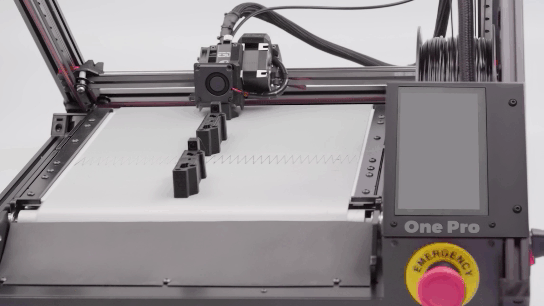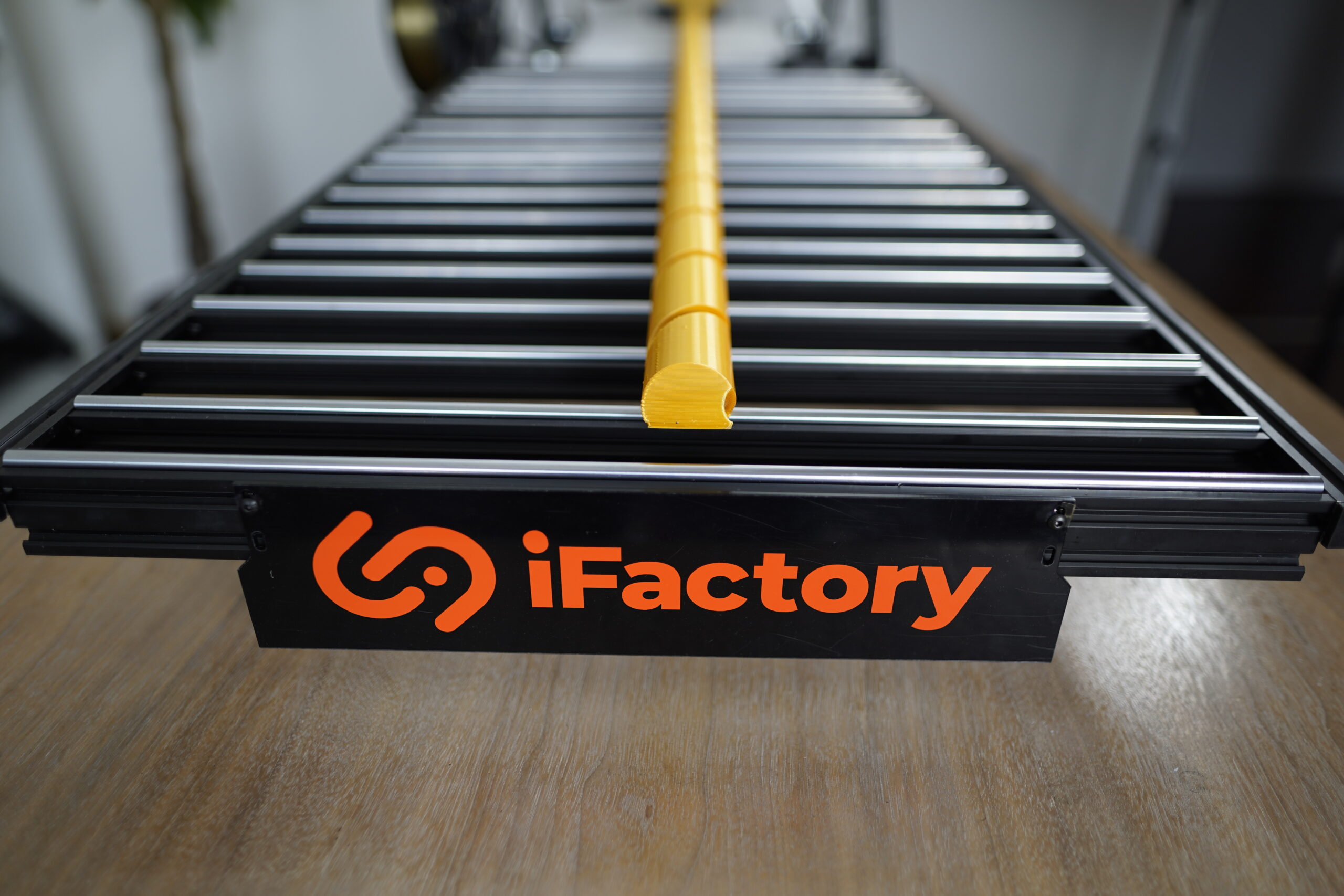Additive manufacturing has evolved from a niche technology to an indispensable tool in modern production. However, while many companies have already integrated 3D printers into their manufacturing processes, only a few fully exploit the potential of this technology. The key lies in Design for Additive Manufacturing (DfAM) – a design philosophy that abandons traditional thinking patterns and opens up completely new possibilities.
The Design Revolution Begins in the Mind
Imagine being able to create components that would be simply impossible with conventional manufacturing methods. This is exactly what Design for Additive Manufacturing enables. It’s not about simply printing existing designs, but rather incorporating the unique possibilities of additive manufacturing into the design process from the very beginning.
The fundamental difference from traditional manufacturing lies in the freedom from geometric constraints. While undercuts, complex internal geometries, or variable wall thicknesses are often impossible or extremely costly in machining or injection molding, these pose no obstacle for 3D printing. However, this freedom requires a radical rethinking in design.
From Theory to Practice: The Basic Principles of DfAM
The art of Design for Additive Manufacturing consists of optimally utilizing the specific characteristics of each printing technology. At iFactory3D, this is particularly impressively demonstrated through the example of the innovative 45° belt 3D printer. This technology not only enables the printing of components of theoretically unlimited length but also revolutionizes the approach to hollow structures.
A central principle of DfAM is function integration. Instead of assembling a product from many individual parts, functions can be directly integrated into a single component. This not only reduces assembly time and potential sources of error but also enables completely new product concepts. A housing can, for example, simultaneously serve as a heat sink, cable management, and fastening element – all manufactured in a single printing process.
Topology optimization plays a crucial role here. Modern software tools analyze the loads on a component and remove material where it’s not needed, while critical areas are reinforced. The result is organic-looking structures that offer maximum strength with minimal material use. These bionic designs, inspired by nature, would not be feasible with traditional manufacturing methods.
The Power of Cavities: A New Paradigm
DfAM becomes particularly fascinating when it comes to designing hollow structures. The 45° belt 3D printer from iFactory3D shows its strengths here: through the inclined printing axis, hollow components can be manufactured without elaborate support structures. This opens up completely new possibilities for design.
Take the example of filling technology: hollow components can be filled with special materials like PU structural foam or epoxy resin after printing. This combination of printed outer shell and subsequently introduced filler achieves mechanical properties that far exceed purely printed components. The time savings are remarkable – hollow structures print faster, and filling takes minutes instead of hours.
This approach particularly revolutionizes industries like medical technology, where individual, lightweight yet high-strength implants or prostheses are needed. But it also enables the manufacturing of guide elements and profiles in mechanical engineering that are both lightweight and extremely resilient.
Design Guidelines: The Grammar of 3D Printing
Successful Design for Additive Manufacturing follows certain rules that arise from the physical conditions of the printing process. These design guidelines are not restrictions, but rather a toolkit for optimal results.
Wall thickness is a critical parameter. Walls that are too thin lead to unstable components, while walls that are too thick waste material and increase printing time. The optimal wall thickness depends on the material used and the printing technology. In the FDM process, for example, wall thicknesses of at least 1.0 mm in vertical and 0.4 mm in horizontal orientation have proven effective.
Another important aspect is component orientation. The correct alignment on the print bed can make the difference between a successful and a failed print. With the 45° belt 3D printer, components should be positioned so that the first layer forms a long, straight edge. This ensures optimal adhesion and forms the foundation for all subsequent layers.
Overhangs and bridges require special attention. While conventional 3D printers usually need support structures for overhangs over 45°, the inclined print axis of the belt printer enables overhangs of up to 60° in the printing direction without additional support. This not only saves material and post-processing time but also opens up new design freedoms.
Shaping the Future: Industries in Transformation
The effects of Design for Additive Manufacturing are already visible today in various industries. In aerospace, topology-optimized components enable significant weight savings while maintaining or even improving strength. Every gram saved means real money in the form of reduced fuel costs.
The automotive industry uses DfAM for developing complex cooling channels in engine components that would not be manufacturable with traditional methods. These optimized cooling systems improve engine performance and reduce fuel consumption.
Particularly impressive are the advances in medical technology. Patient-specific implants that are perfectly adapted to individual anatomy not only improve the healing process but also significantly increase patient comfort. The ability to process biocompatible materials in complex, porous structures enables implants that promote bone tissue ingrowth.
The Path to Successful Implementation
Introducing Design for Additive Manufacturing in a company requires more than just purchasing a 3D printer. It’s a paradigm shift that requires training, rethinking, and often an adaptation of entire product development processes.
The first step is identifying suitable use cases. Not every component benefits from additive manufacturing. Ideal candidates are components with complex geometry, low quantities, or high individualization requirements. Components where weight reduction or function integration offer clear added value are also excellent candidates.
Training designers is crucial. They must not only understand the technical possibilities and limitations of additive manufacturing but also learn to think in new categories. Workshops, practical exercises, and collaboration with experienced DfAM experts significantly accelerate this learning process.
Software plays an increasingly important role. Modern CAD programs offer special functions for additive manufacturing, from automatic support structure generation to topology optimization. Integrating these tools into the existing workflow is essential for efficient success.
The Next Evolution: Intelligent Manufacturing
The future of Design for Additive Manufacturing lies in further automation and intelligence. Artificial intelligence will increasingly be able to generate optimal designs based on functional requirements. Generative design, where the computer creates and evaluates thousands of design variants, will become standard.
The integration of sensors directly during the printing process enables intelligent components that can monitor and communicate their own loading. This fusion of mechanics and electronics in a single manufacturing step revolutionizes the Internet of Things and Industry 4.0.
New materials continuously expand the possibilities. From self-healing polymers to shape memory alloys to biodegradable plastics – each new material opens up new application fields and design possibilities.
Conclusion: Rethinking Design
Design for Additive Manufacturing is more than just a manufacturing method – it’s a new way of thinking. It frees designers from centuries-old constraints and enables products that not only function better but are also more sustainable and cost-effective.
The technology of 45° belt 3D printing, as offered by iFactory3D, impressively demonstrates how innovative printing technologies open up new design possibilities. The ability to print hollow structures without support structures and subsequently fill them is just one example of the revolutionary possibilities that can be unlocked through thoughtful design.
The key to success lies in understanding that additive manufacturing is not simply a replacement for traditional manufacturing methods, but a completely new category with its own rules, possibilities, and potentials. Companies that seize this opportunity and integrate Design for Additive Manufacturing into their DNA will be the winners of the manufacturing revolution.
Ready to take your designs to the next level? Discover how iFactory3D’s innovative 45° belt 3D printing technology can revolutionize your product development. Contact us today for personal consultation and learn how Design for Additive Manufacturing can solve your specific challenges. Let’s redefine the boundaries of what’s possible together!
 Serial production
Serial production
